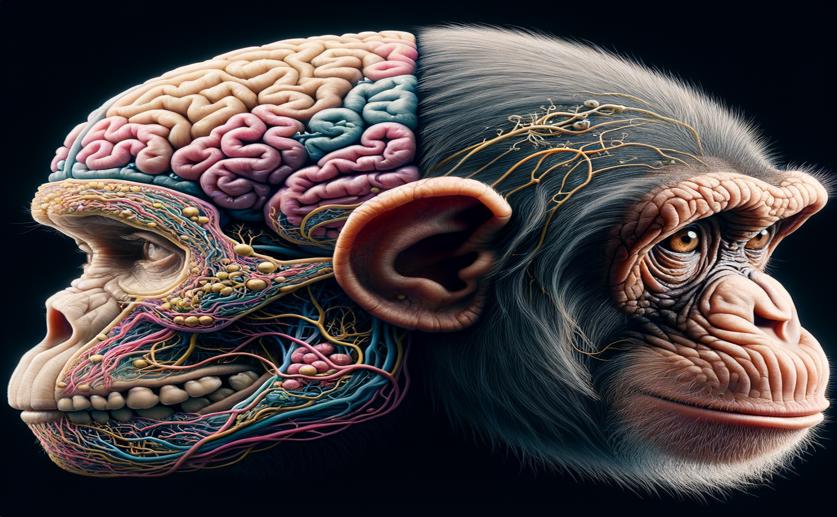
Comparing Brain Structure Connections in Humans and Chimps
Greg Howard
18th July, 2024

Image Source: Natural Science News, 2024
Key Findings
- The study by Paris-Saclay University examined superficial white matter bundles (SWMBs) in human and chimpanzee brains
- Researchers found various SWMB shapes, including U-shaped, 6-shaped, and J-shaped fibers, using diffusion MRI tractography
- Differences in SWMB localization between humans and chimpanzees suggest variations in brain folding processes, linked to cognitive functions
References
Main Study
1) Comparative analysis of the chimpanzee and human brain superficial structural connectivities.
Published 17th July, 2024
https://doi.org/10.1007/s00429-024-02823-2
Related Studies
2) Age-related effects in the neocortical organization of chimpanzees: gray and white matter volume, cortical thickness, and gyrification.
3) Short frontal lobe connections of the human brain.
4) A comprehensive atlas of white matter tracts in the chimpanzee.



 6th July, 2024 | Jenn Hoskins
6th July, 2024 | Jenn Hoskins